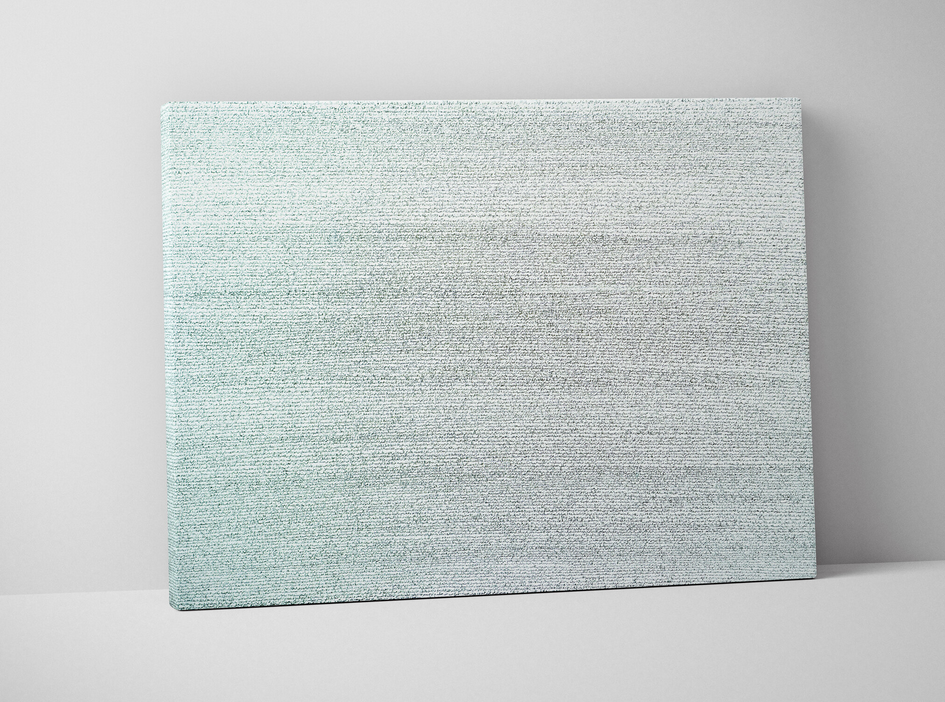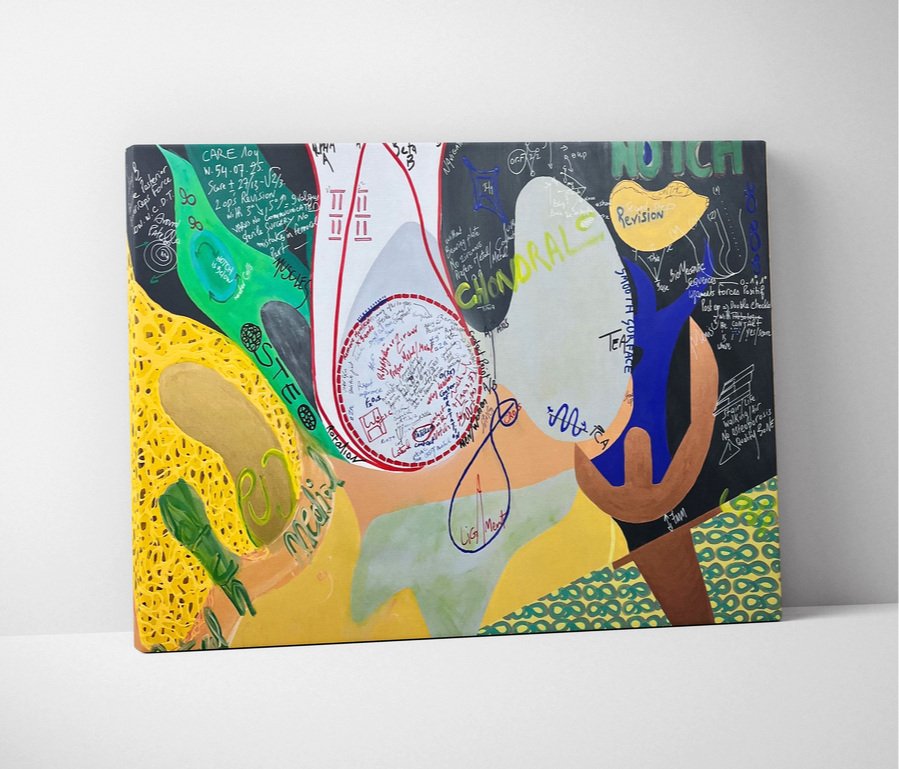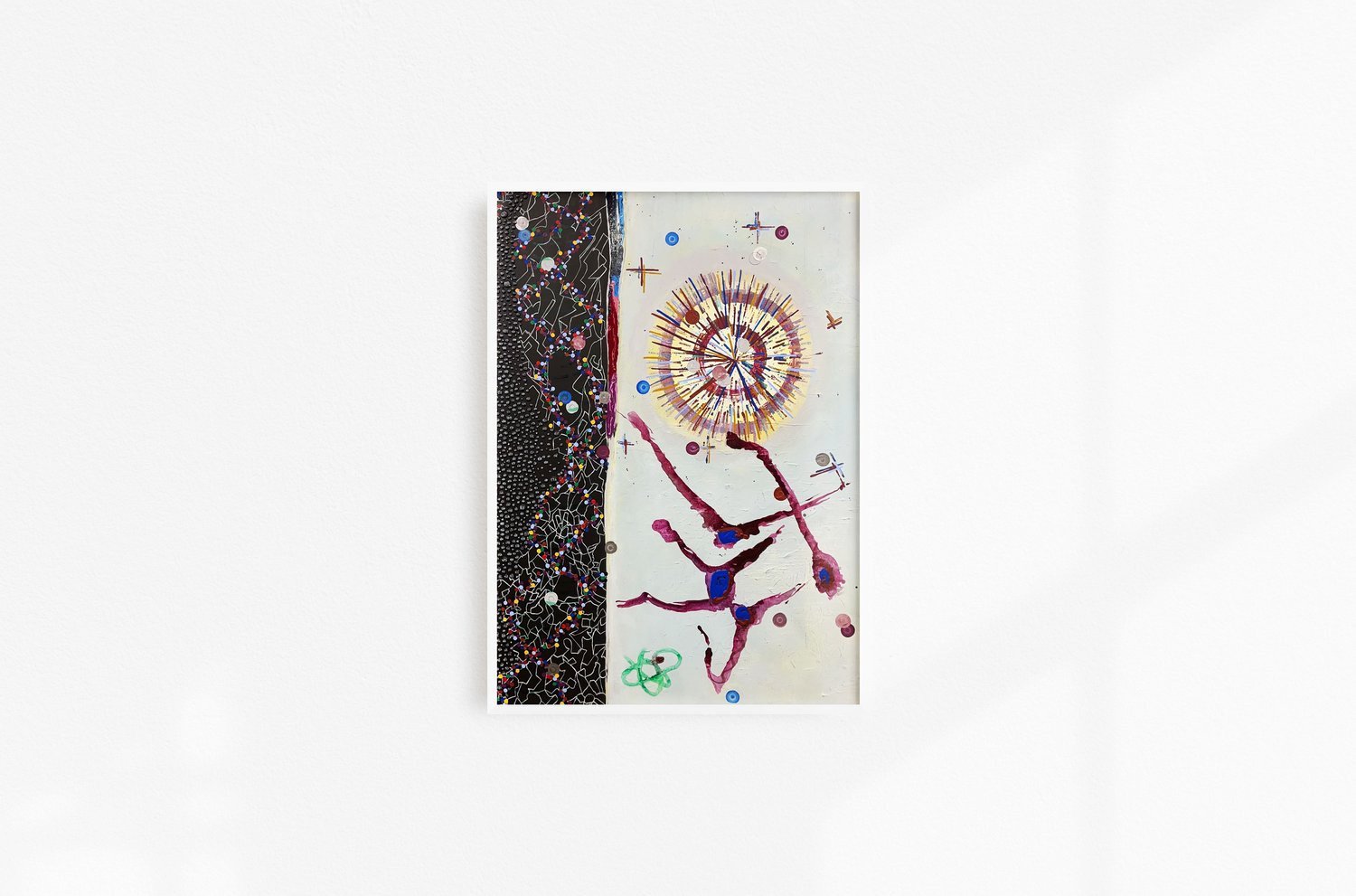Interview
Farid Izemmour
Throughout his art journey, Farid has not just sought after self-actualization. He has always desired something more: to find his calling.
Having touched on classicism, expressionism, and Dadaism, Farid finally recognizes himself in abstraction. Calligraphy has accompanied him throughout his creative journey, eventually becoming his specialty, forging his evocative and daring style and unique method.
With 30 years of experience, Farid continues to explore this traditional art to this day, breathing new life into canonical forms and transmuting them through explorations of lines and textures.
What is your background and how did you start your journey in the art world?
Born in Algiers on 24th September 1961, I discovered my attraction to drawing at Hamia High School. My obvious talent did not go unnoticed, and in 1978 my teacher enrolled me in the School of Fine Arts in Algiers. This was the first milestone on my path to becoming the artist I am now.
Reluctant to follow the preconceived schema of study, Farid instinctively launched himself into the health field, driven by the desire to be useful and take his place in this world. Freshly graduated with an instrumentalist license, Farid flew to Switzerland in 1990, following wide civil unrest in his native country, where he feared he could no longer apply his philosophy of life. He became a Swiss citizen in 1993.
Farid quickly regained his taste for painting, and created an amalgamation of works that emerged between 1991 and 1994. These works are the fruit of an intense search for his own style.
What does your work aim to say? Does it comment on any current social or political issues?
“I deal with scientific subjects. My approach is a singularity and my works are coded posters based on communication. In my paintings, I navigate between order and chaos. Inspired by what surrounds me, especially nature, I establish disorder to achieve a state of order.
The letter is like a currency created for communication. It is the source of all pleasure or passion. Any fragment of reality is, in fact, a copy; it is the principle of the construction of fractals. The same is true for the letter. Linguistically, it changes tone, speed, and emotion by integrating it with other notes, which ultimately shape a syntax. The letter is composed of a code, a law, and a form to create individuality or, through a collection of letters, to evoke the experience of various events generated by the writer. The letter can speak for itself; the tree's structure and branching lead to evolution and expansion.
It is as if the letter wants to participate in this new form of human communication, and begins to take a new twist in modern futuristic tools. The branched structures of blood vessels or pulmonary lobes may recall the fractal shapes generated by the phenomenon of aggregation accompanying limited diffusion. The letter is still present in the scientific and literary field and other contemporary sign systems. Will it transform through the ages and take on another form and meaning? History has taught us to answer with a resounding yes.
The main subject of my work is always the letter, as I perceive it. It is not syntax, but a search for form under the aegis of deterministic and hazardous laws, and a standoff between order and disorder as we understand them. All their apparent confrontation and hidden interaction are perceptible in my paintings. The adaptation of the letter is still being determined. It can find a place in all fields. I defined it as "fractal" because it is based on a linguistic symbol that makes no sense, being isolated. So I ask myself questions: is the letter not taking another form, accepting another status? Is not fighting the literary writing of traditional books a concern?”
Do you plan your work in advance, or is it improvisation?
“I am more into expressionist abstraction. My art is particular because it is very close to calligraphy, whose letters I use in my works.
My working method is structured and thoughtful. I do not approach my work with spontaneity. I plan, draw sketches, and do and undo and redo until I am satisfied. The abstract does not want improvisation. Jackson Pollock showed it well in his works.
I use the rhythmic structure taught by my teacher Mr. Gilbert Wolfishberg. Since his teaching, I have integrated the rhythmic system and the golden ratio systematically. Nothing is left to chance. Every element is placed intelligently.”
What process, materials and techniques do you use to create your artwork?
“I use sketches with tracing sheets to put my drawing in the right place with the perfect ratio. Then I create a grid and adapt different elements to create more dialogues between the details. I also organize a color palette to create atmospheres, contrasts and balance for the work, whether in the forms or the colors.
The goal is to transmit the message to several spectators of art professionals or amateurs. I always give clues and allow a reading entry of the work. I mainly use acrylic paint, and the inks are a nod to calligraphy.”
What does your art mean to you?
“My art is no longer a hobby. It is a need to express oneself and dialogue, as well as a form of intelligent commitment that I transmit through my work. I approach subjects on science and various other themes. I am currently working on a theme around the relationship between our body and surgery or anatomy. ”
What’s your favorite artwork and why?
“I don't have a single favorite work. Each has its own story, and I have an almost sensual relationship with each. If I had to choose, it would be Traces_01, which took me 14 months to finish (shown below).
Many people tell me that what I wrote during the 14 months on this board was 190cm long by 160cm high, and 4 kilometers of writing. It was a performance and a great learning opportunity about my own patience and perseverance. The work opened the way for me on everything in the TRACES series.”


Have you had any noteworthy exhibitions you'd like to share?
“The exhibition that gave me the most pleasure is undoubtedly the Villa DUTOIS exhibition in Geneva, where I exhibited a series of 30 paintings. My exhibition was aptly titled “series of 30”. It was a success for me because I was confronted for the first time as an artist by a collector who alone acquired two of my works.”





